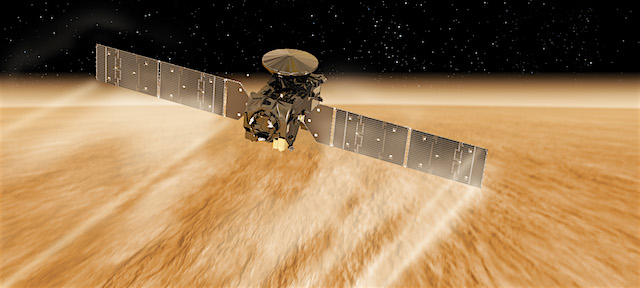 On Friday, 17 November, the flight controllers at ESOC began operations to bring the spacecraft into a new phase of the on-going aerobraking campaign, marking the start of ‘shorter’ orbits. ‘Short’ is considered, somewhat arbitrarily, as when the orbital period (i.e. time needed to complete one orbit) falls below 6 hrs. Here’s a brief summary of progress to date.
On Friday, 17 November, the flight controllers at ESOC began operations to bring the spacecraft into a new phase of the on-going aerobraking campaign, marking the start of ‘shorter’ orbits. ‘Short’ is considered, somewhat arbitrarily, as when the orbital period (i.e. time needed to complete one orbit) falls below 6 hrs. Here’s a brief summary of progress to date.
TGO resumed its aerobraking campaign in August after a short break during summer due to conjunction with the Sun (that is, the Sun blocked the line-of-sight signal path between Earth and Mars), which makes for difficulties in communicating with the Red Planet.
Almost a month later, on 19 September, TGO’s operators faced, for the first time, a situation that violated the peak acceleration limits on the spacecraft, which then triggered an autonomous ‘flux reduction manoeuvre.’
During this operation, the propulsion system operated to raise the pericentre height (the point in the orbit where the spacecraft is closest to the planet) by 3 km, so that the next time the spacecraft passed through the atmosphere, the aerodynamic drag was reduced.
This event was quickly ‘recovered’ – which is engineer-speak meaning ‘everything got back to normal’ – so no delay in the overall aerobraking campaign was incurred.
“As of now, TGO aerobraking is on track with respect to our long-term predictions,” says [TGO Spacecraft Operations Manager] Peter [Schmitz].
“On 8 November, our orbital period was seven hours and eight minutes, while now it is closer to six hours and twenty minutes.” [More at link]








